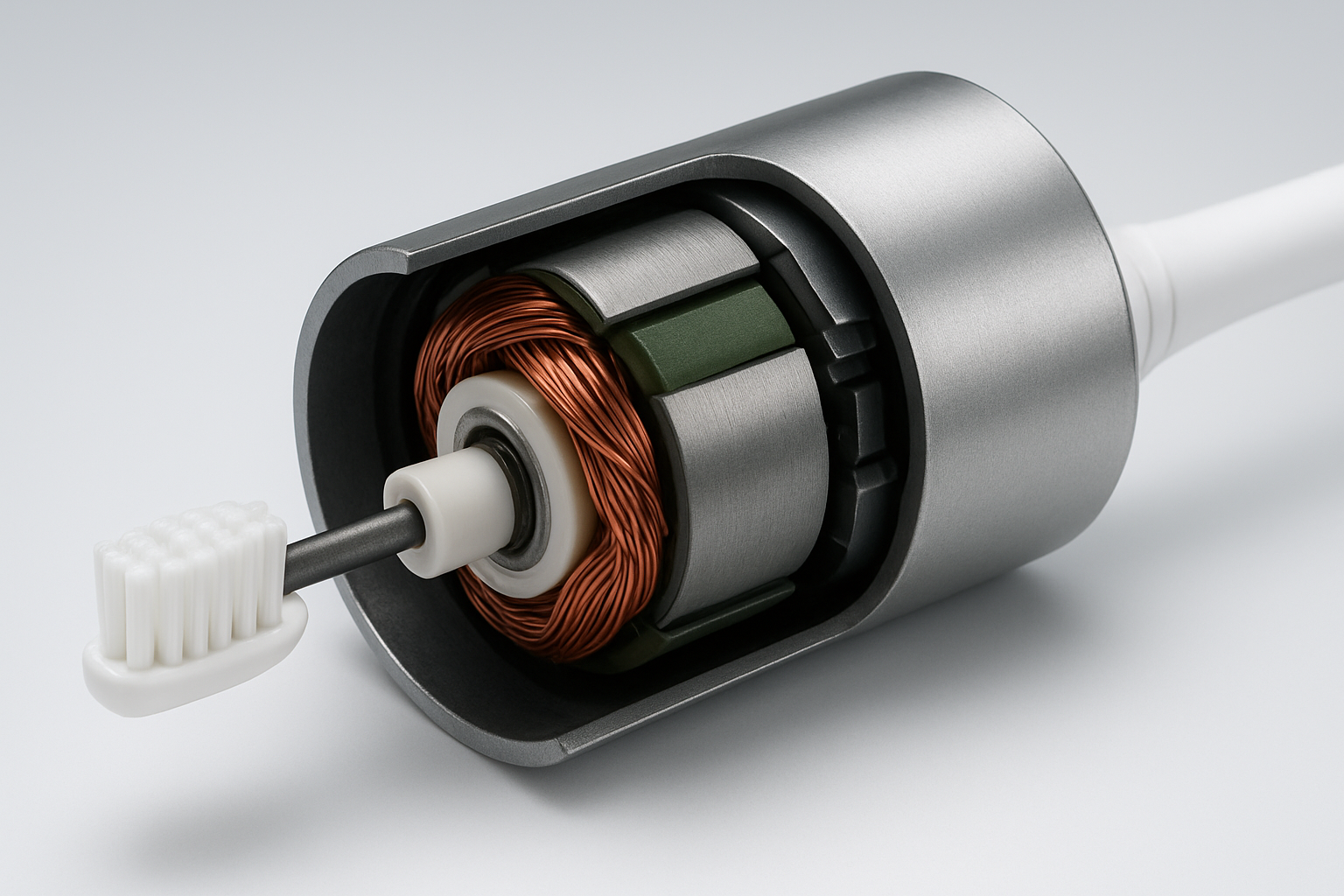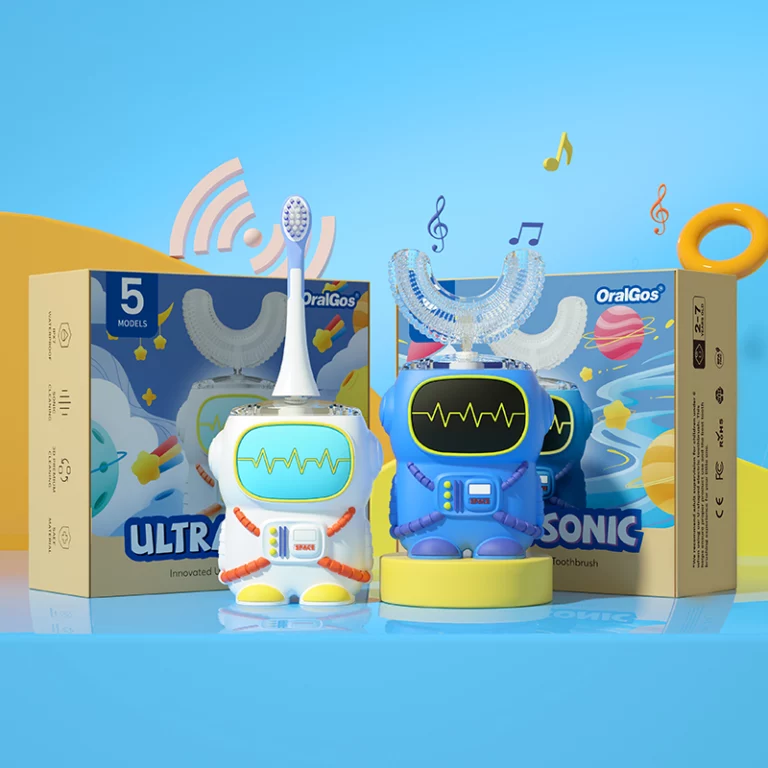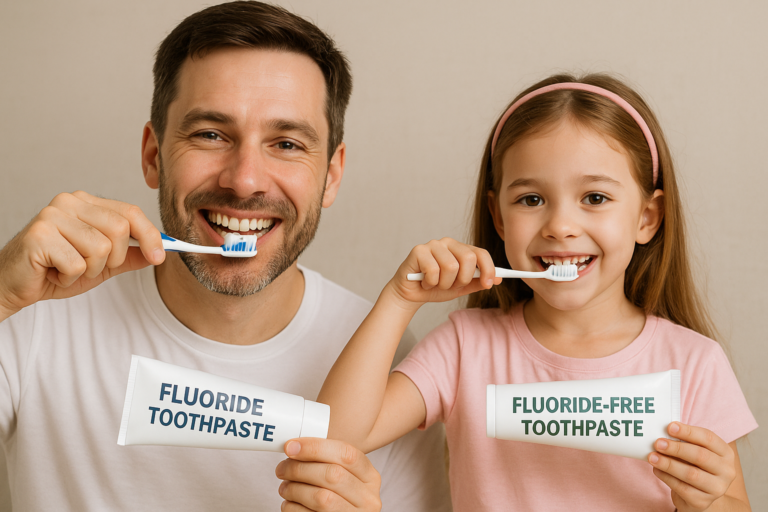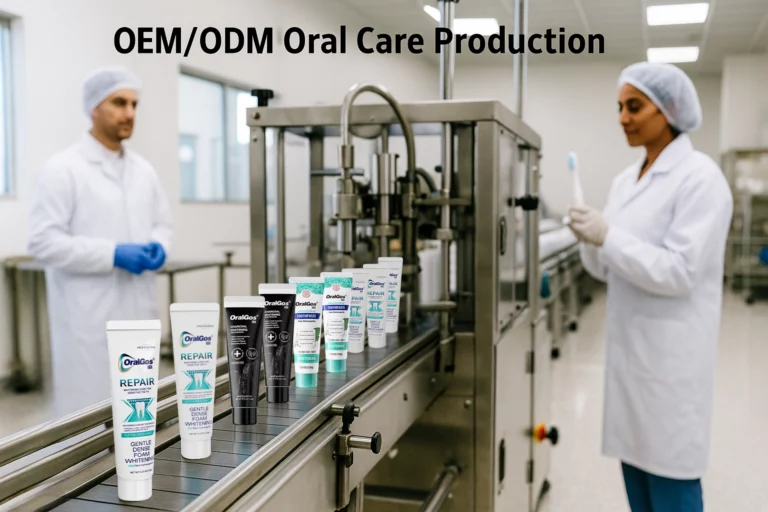In recent years, electric toothbrush motors have improved a lot. These changes have transformed how manufacturers create, feel, and function oral care products.
As the need for better and cheaper electric toothbrushes increases worldwide, makers are working on new motor designs. They are also improving performance and finding ways to produce them at lower costs. This article looks at the latest changes in electric toothbrush motor technology. It covers different motor types, key performance improvements, and ways to control costs while keeping quality high.

Understanding Motor Types in Electric Toothbrushes
The heart of any electric toothbrush is its motor. The motor type directly influences brushing effectiveness, noise level, durability, and energy consumption. The three main motor technologies used in electric toothbrushes today include:

1. DC Brushed Motors
DC brushed motors are the traditional choice in many entry-level electric toothbrushes. These motors operate through direct electrical contact via brushes, converting electrical energy into rotational motion.
- Advantages: Simple design, low initial cost, easy to manufacture.
- Limitations: Brushes wear out over time, causing reduced lifespan and increased maintenance. Also, they generate more noise and vibration.
2. Brushless DC (BLDC) Motors
Brushless DC motors eliminate brushes and instead use electronic commutation to control rotor movement. This design leads to higher efficiency and durability.
- Advantages: Longer lifespan, quieter operation, less friction and heat, higher energy efficiency.
- Limitations: Slightly higher manufacturing complexity and initial cost.
3. Coreless Motors
Coreless motors feature a rotor without an iron core, reducing weight and inertia. This allows for quicker acceleration and precise control.
- Advantages: High responsiveness, smooth operation, compact size.
- Limitations: Typically more expensive and complex to produce.
Understanding these motor types is fundamental for brands aiming to balance performance and cost while meeting diverse consumer demands.

Performance Improvements in Electric Toothbrush Motors
Recent innovations in motor technology have focused on improving several key performance parameters: power output, noise reduction, vibration control, and energy efficiency. These factors are crucial in delivering a superior brushing experience that promotes oral health.
Enhanced Power and Torque
Modern electric toothbrush motors are designed to generate greater torque to effectively remove plaque and stains. New materials, like rare-earth magnets, have allowed motors to provide stronger and more reliable power without getting bigger.
Noise and Vibration Reduction
User comfort is paramount. Innovations in motor balancing, damping materials, and precision engineering have significantly lowered noise levels and unwanted vibrations. Brushless and coreless motors particularly excel in this area, making brushing quieter and more pleasant.
Smart Speed and Oscillation Control
Integration of microcontrollers and sensor technology allows dynamic control of motor speed and oscillation patterns. This enables toothbrushes to adapt brushing intensity based on user needs or cleaning modes, enhancing effectiveness and safety.
Improved Energy Efficiency
Longer battery life is a key consumer demand. Electric toothbrushes can work better and use less energy, especially in brushless designs. This helps them last longer on one charge. It also supports environmental sustainability.

Cost Control Strategies in Motor Production
While motor technology has advanced, cost control remains critical to keep electric toothbrushes competitively priced. Manufacturers implement several strategies to optimize costs without sacrificing quality:
Streamlined Manufacturing Processes
Adopting automated assembly lines and precision tooling reduces labor costs and production variability. Efficient manufacturing minimizes defects, which lowers waste and improves yield rates.
Modular Motor Designs
Using modular motor components that can be standardized across multiple product lines simplifies inventory management and reduces tooling expenses. This approach allows quick customization while keeping production scalable.
Material Optimization
Choosing affordable and durable materials, like good-quality magnets and plastics, balances motor performance and cost. Bulk purchasing and strategic supplier partnerships further reduce raw material costs.
In-House Motor Development
Some OEMs invest in in-house motor R&D to tailor designs specifically for their products. This vertical integration can reduce licensing fees, enable proprietary innovations, and better control production costs.

Case Study: Our M9 Electric Toothbrush Motor Technology
Our top M9 electric toothbrush shows how advanced motor technology can provide great performance at a good price. The M9 uses a brushless DC motor with smart oscillation control. This provides strong but gentle cleaning with low noise and vibration.
Key features include:
- High torque motor with rare-earth magnets for consistent brushing force.
- Optimized motor balancing that reduces noise to below 50 dB.
- Adaptive speed control enabled by integrated sensors.
- Efficient power management extending battery life up to 30 days per charge.
This combination of cutting-edge motor technology and cost-effective design reflects our commitment to innovation and quality. Learn more about the M9 electric toothbrush and how it represents the future of oral care.

Why Partner with a Leading OEM for Motor Technology
For brands looking to enter or expand in the electric toothbrush market, partnering with an experienced OEM is vital. Leading OEMs specialize in advanced electric toothbrush motor technology and provide scalable manufacturing solutions tailored to diverse market needs.
Our OEM services include:
- Custom motor design and integration.
- Quality-controlled assembly processes.
- Cost optimization through supply chain management.
- Compliance with international standards.
Working with an OEM helps your products use the latest motor innovations. This also keeps development time and costs under control.
Conclusion
The fast improvements in electric toothbrush motors are changing oral care. They provide better cleaning, quieter use, and longer battery life.
Manufacturers and brands must understand motor types. They should also know how to improve performance and control costs. This knowledge helps them create better products.
The industry can meet rising consumer demands for quality and affordability. You can achieve this by using new ideas like brushless and coreless motors, smart speed control, and better manufacturing. Our M9 electric toothbrush is a testament to these advances, combining high-tech motor solutions with competitive pricing.
For companies seeking to leverage these technologies, partnering with a professional OEM ensures access to cutting-edge developments and streamlined production capabilities. Explore our OEM page to discover how we can help bring your electric toothbrush vision to life.





